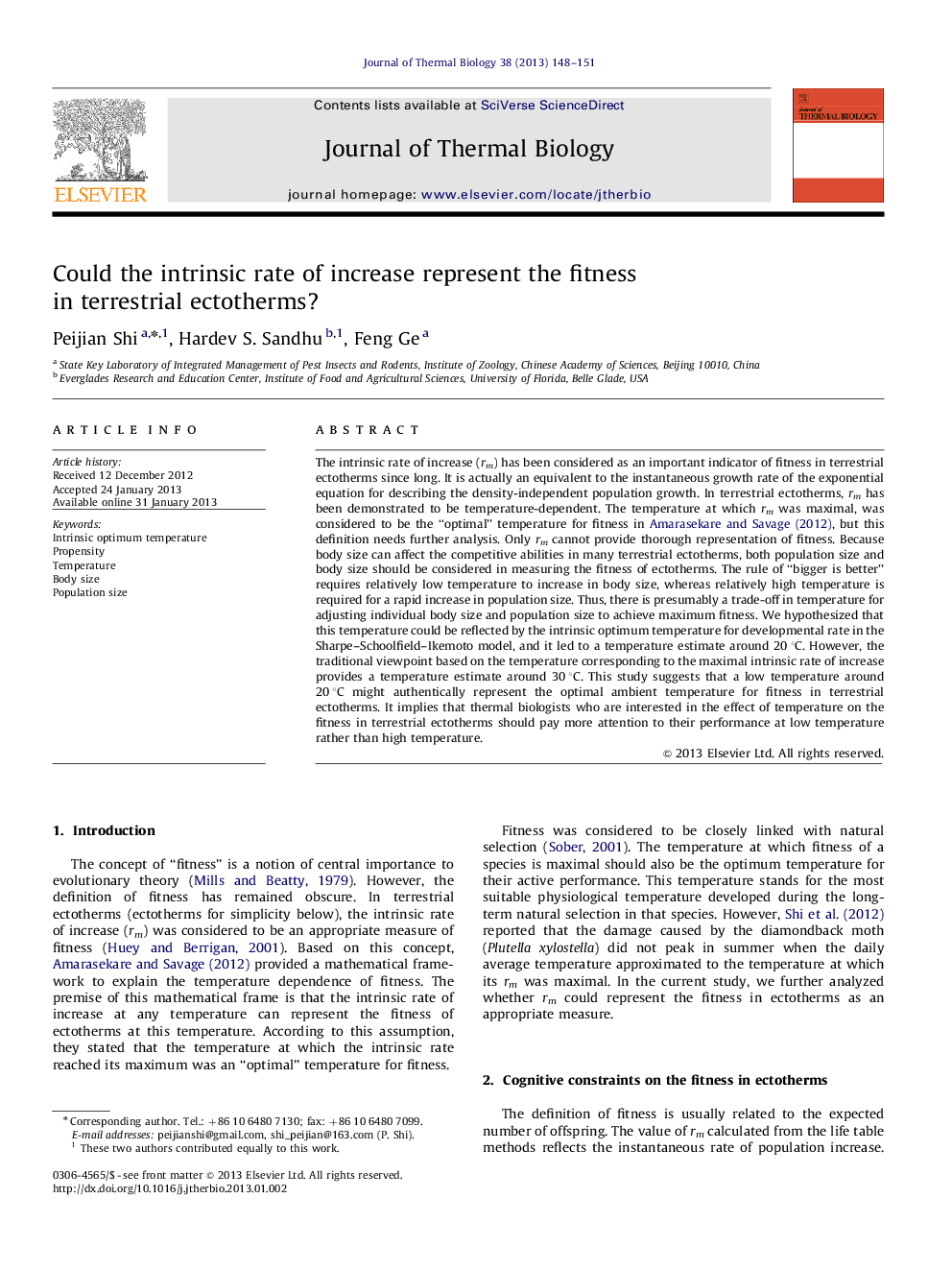| کد مقاله | کد نشریه | سال انتشار | مقاله انگلیسی | نسخه تمام متن |
|---|---|---|---|---|
| 2843009 | 1166066 | 2013 | 4 صفحه PDF | دانلود رایگان |

The intrinsic rate of increase (rm) has been considered as an important indicator of fitness in terrestrial ectotherms since long. It is actually an equivalent to the instantaneous growth rate of the exponential equation for describing the density-independent population growth. In terrestrial ectotherms, rm has been demonstrated to be temperature-dependent. The temperature at which rm was maximal, was considered to be the “optimal” temperature for fitness in Amarasekare and Savage (2012), but this definition needs further analysis. Only rm cannot provide thorough representation of fitness. Because body size can affect the competitive abilities in many terrestrial ectotherms, both population size and body size should be considered in measuring the fitness of ectotherms. The rule of “bigger is better” requires relatively low temperature to increase in body size, whereas relatively high temperature is required for a rapid increase in population size. Thus, there is presumably a trade-off in temperature for adjusting individual body size and population size to achieve maximum fitness. We hypothesized that this temperature could be reflected by the intrinsic optimum temperature for developmental rate in the Sharpe–Schoolfield–Ikemoto model, and it led to a temperature estimate around 20 °C. However, the traditional viewpoint based on the temperature corresponding to the maximal intrinsic rate of increase provides a temperature estimate around 30 °C. This study suggests that a low temperature around 20 °C might authentically represent the optimal ambient temperature for fitness in terrestrial ectotherms. It implies that thermal biologists who are interested in the effect of temperature on the fitness in terrestrial ectotherms should pay more attention to their performance at low temperature rather than high temperature.
► Intrinsic rate of increase does not thoroughly represent the fitness in ectotherms.
► An optimal temperature exists for adjusting individual body size and population size.
► Intrinsic optimum temperature in the SSI model might be optimal for fitness.
Journal: Journal of Thermal Biology - Volume 38, Issue 3, April 2013, Pages 148–151